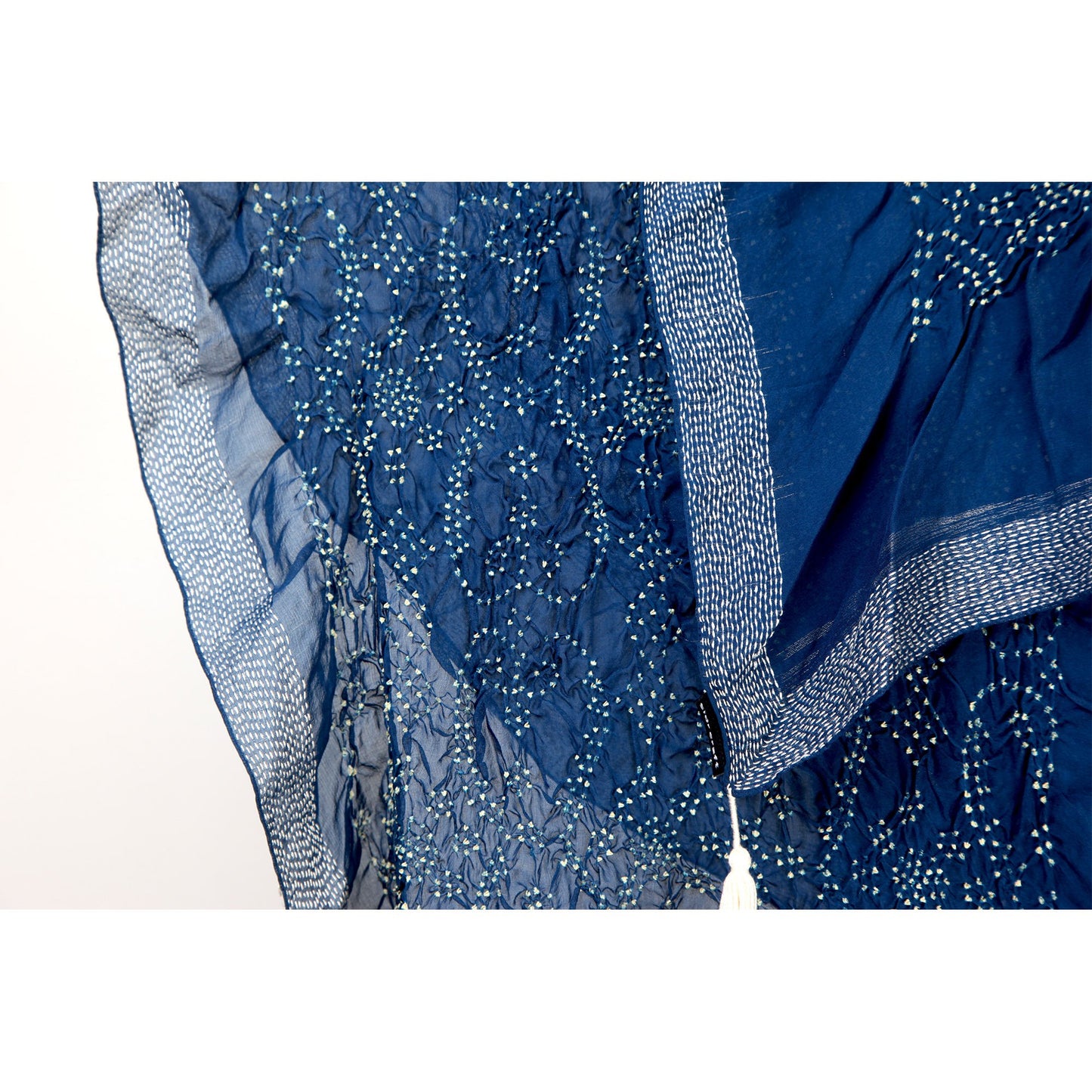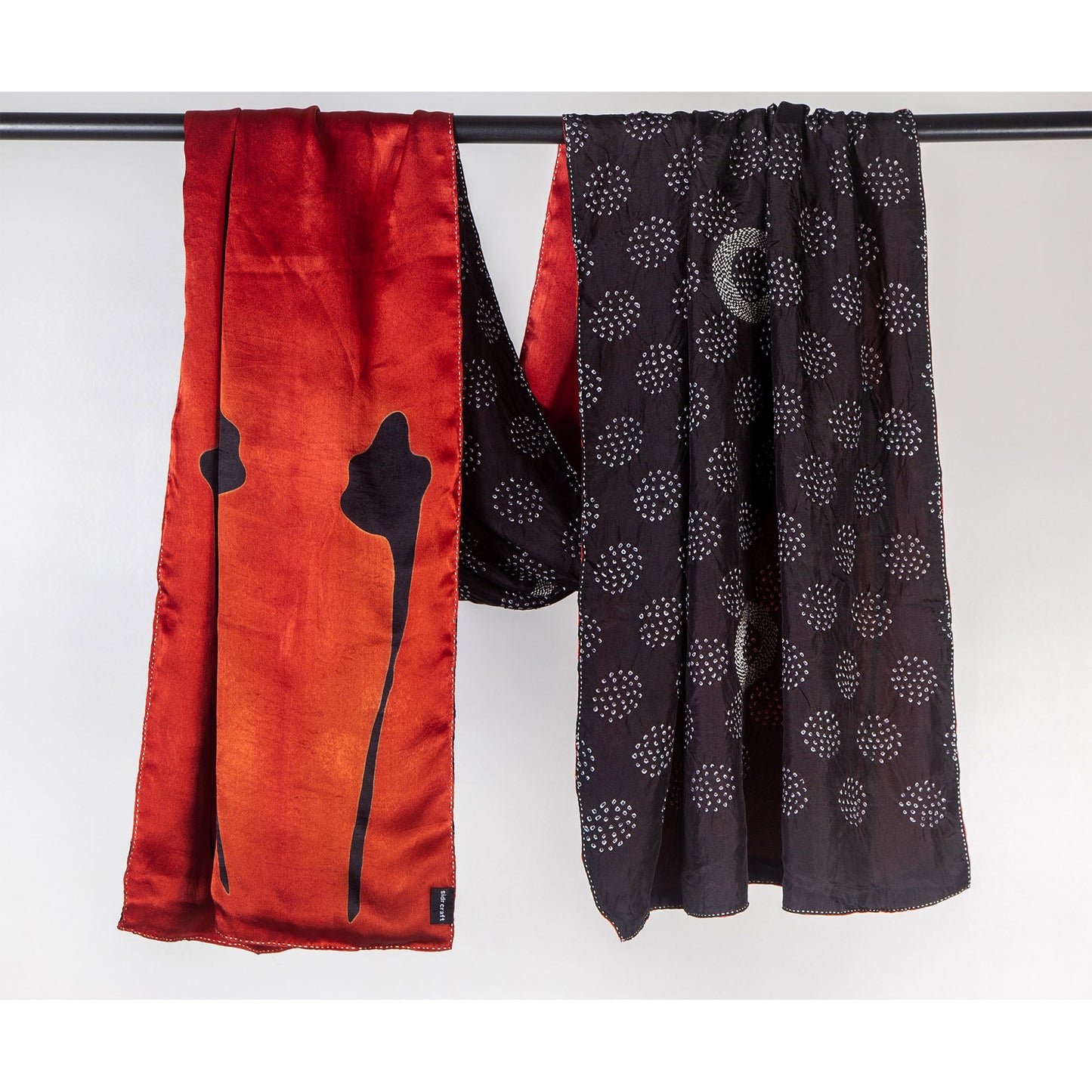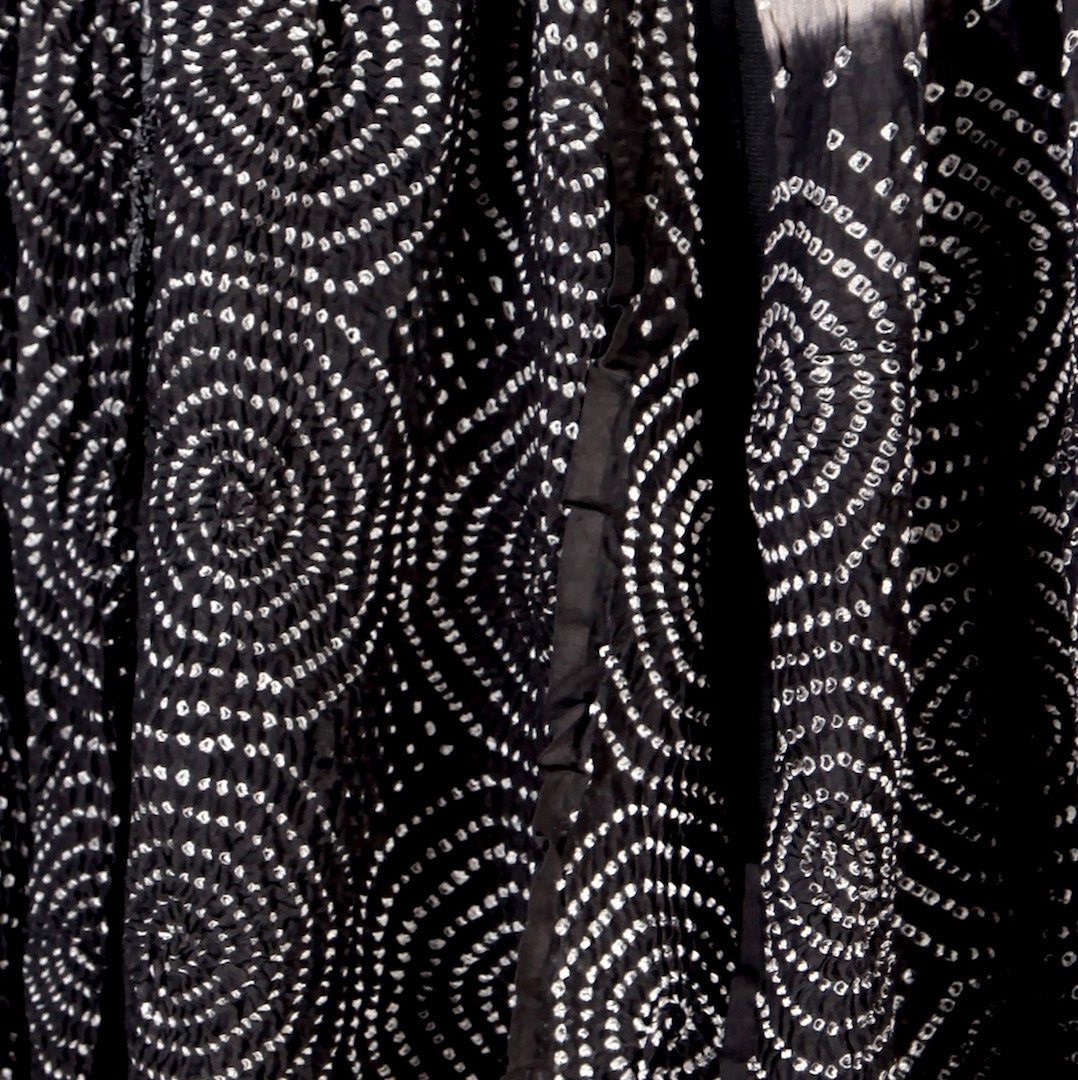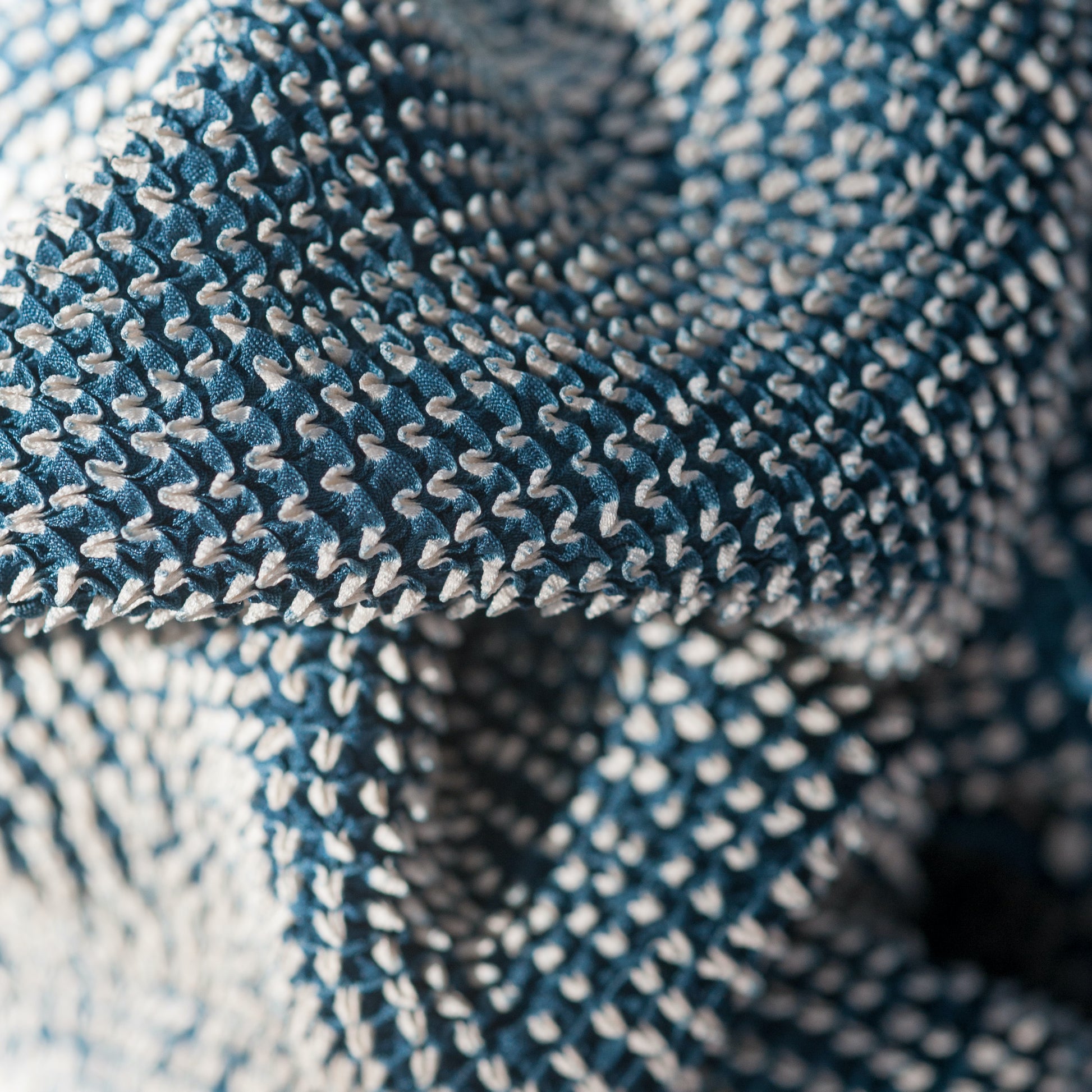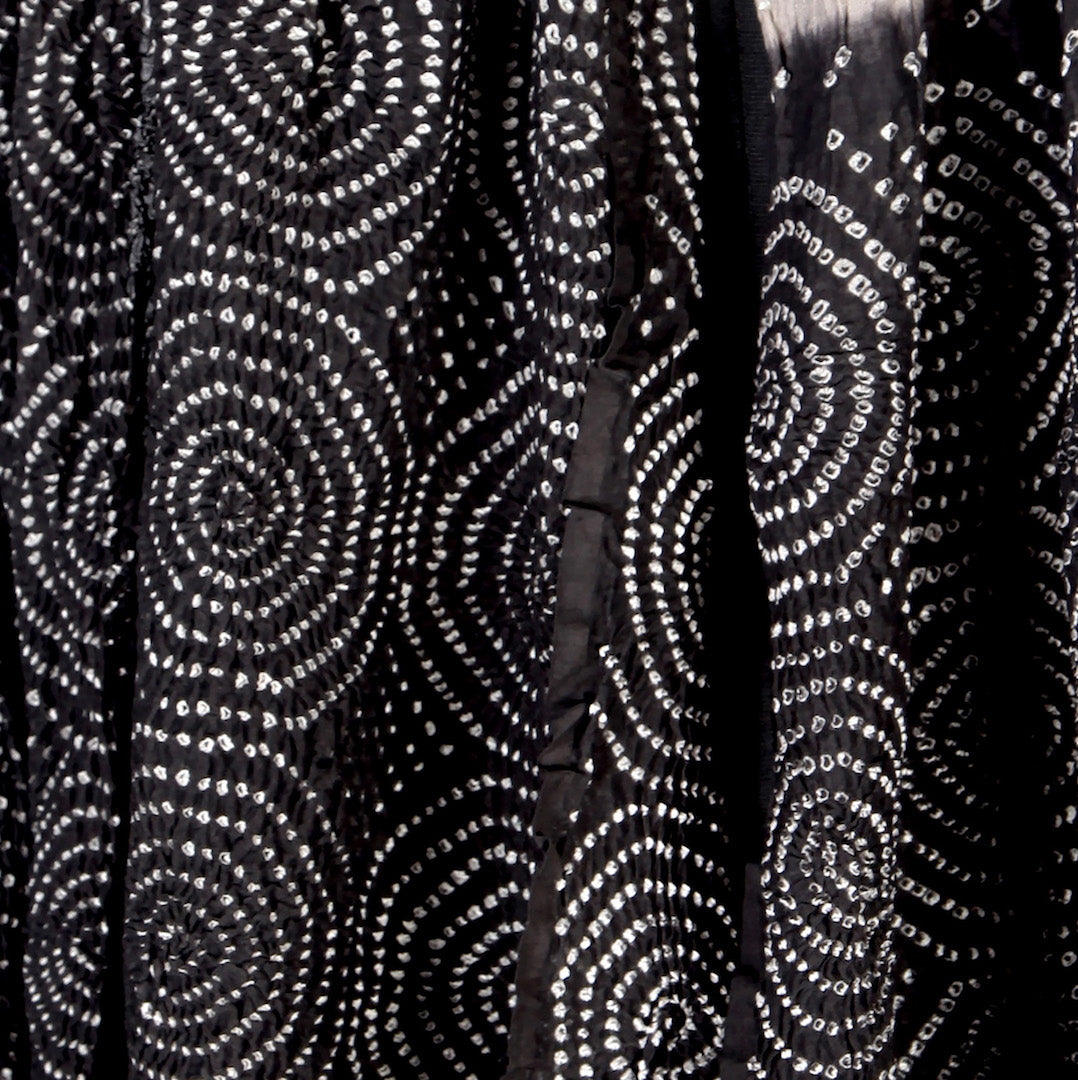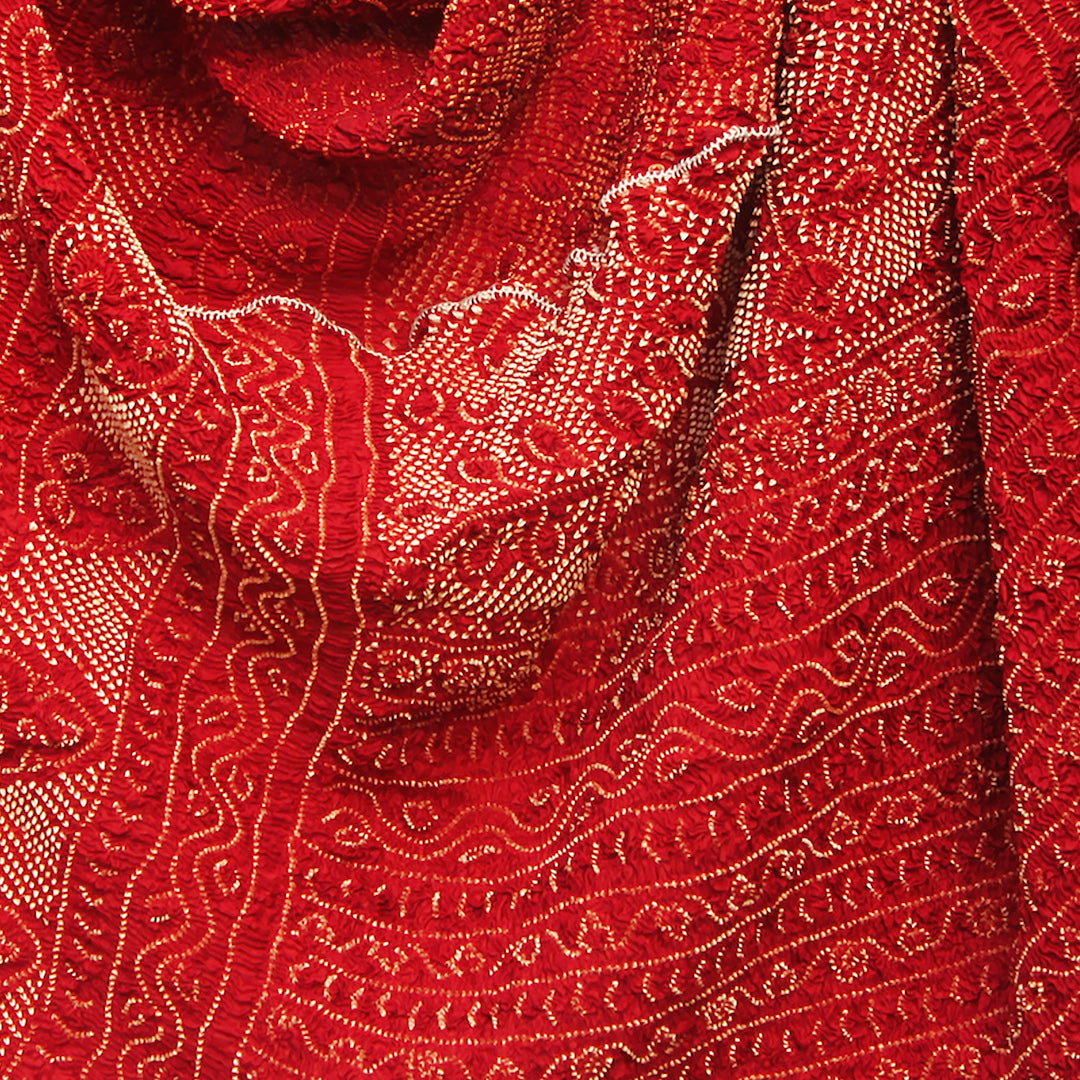India, SIDR Craft / Abduljabbar and Abdullah Khatri, Bandhani
Abduljabbar Khatri and Abdullah Khatri grew up watching their mother tying pieces of cloth for Bandhani and began learning this age-old art from her. The folk art and craft of Bandhani has a rich history in the Khatri community of Kachchh, where the brothers are from. Their ancestors first moved to Kachchh in the 17th century upon invitation from King Bharmal Rao ji, a patron of crafts who was greatly impressed with the finesse of Bandhani work and wanted the craft to thrive in Kachchh. Soon, local communities incorporated Bandhani into their lifestyle, each developing their own designs and colour schemes. Bandhani became a source of prestige and identity. It is, essentially, an ancient tie-dye art form known for its unique texture, patterns, and finesse of dots achieved through the plucking and tying of tiny bindings into cloth with thread.
The Khatri brothers started SIDR craft in 1992, in an attempt to revive the lost high-quality Bandhani craft technique. Today, this craft organisation includes an in-studio dyeing team, and over 300 women artisans. Designs are often developed in collaboration with designers and artists, though they also experiment with patterns, colours, and layouts to develop their own design aesthetic. Once finalised, designs are traced onto fabric and distributed to the artisans across villages in Kutch for tying. Once the tied pieces come back to the studio, they are dyed in-house. Today, SIDR craft has helped revive this art form and create truly exquisite Bandhani products, as well as helping hundreds of women to earn an income.
To further follow the story of SIDR Craft, please find them on social media here.
Share



